alternate cartographies and writing/reading as desire paths
rhizomes, reading on the train and note-taking as aesthetic joy
I am going to write this now because I sense it will pass. I want to remember it as it once was. The old worn out love, that will grow and change with age, becoming more rigorous and tamed, losing its wilderness. Will keep walking with its bad back and hunched over. And keep on, keep on.
The moment where reading, writing, seemed a freewheeling joy. In a honeymoon of words. My Master’s graduation brought the intense bubbling of discovering writing and reading entirely for myself. Scary at first and then a sudden tumbling. The ecstasy of truly unconstrained writing—putting pen to paper and it is moving like a wayward limb.
I am on the train home reading Jackie Wang. I am inside the book you know. Like how Jamie Hood describes in the introduction to Heroines, meeting a book like a ‘cosmic encounter, like souls meeting’ like it has ‘lived inside you already’ and imprints itself on you after.1 The man sat next to me smells like my Nonna’s flat in Torino, I haven’t been there since my head would press against my Papa’s belly button, squashed against him in the ascensori alla piemontese, the rickety lifts you would find in old apartment blocks in Torino, my brother racing us up the steep staircase that twisted round the lift. Us sleeping in a bare room with our cousin, that just held three single beds and a little television so we would watch Italian Big Brother. In my Nonna’s tiny kitchen while she ate poached pears, and we ate her apple cake, Torta di Mele della Nonna named by the tradition of it being passed down through generations of grandmothers.
I don’t know how he smells of her exactly, reading the newspaper next to me. Maybe it’s the smell of the old streets of Torino with their old rigid structures and lost pride, walking through the porticoes as the sun slips through the gaps catching on the dust that fills the air and the Alps sublime in the distance.
I have been reading Natalia Ginzburg, who describes Torino as
“Our city, after all, is melancholy by nature. On winter mornings, it has a distinctive smell of the station and soot, spread through all the streets and down all the avenues; when morning comes, we find it in grey fog, and wrapped up in its scent. Sometimes, through the fog, a dim sunbeam is filtered through, tinting the fog pink and the snow-piles lilac, shining on the bare branches of plant…and the river runs with a green twinkle under the great stone bridges, so the city even seems, for a moment, laughing and hospitable: but it’s a fleeting impression. The essential nature of the city is melancholy: the river, losing itself in distance, vanishes in a horizon of violet mist, which makes you think about sunset even at mid-day; and in that moment you breathe that same gloomy scent and industrial soot and hear the whistle of trains.”
So I am thinking of the stranger and of my Nonna and of Torino and the power of smell; and Wang who is writing about the Charles River, maybe that is what made me think of Torino which lies on the Western bank of the River Po; and I have circled where she writes the “trees cry light so that we may be happy” and also “look at how my hatred softens. It is supple like silken tofu”.2 I love that line can see hatreds soft white flesh jiggling, can feel it like I am holding it in my palm. All these things woven together in my mind. Through the act of reading, these things are brought not just into relation—but in the way of Glissant, Deleuze and Guattari—rhizomatic. Glissant describes rhizomatic thought as “the principle behind what I call the Poetics of Relation, in which each and every identity is extended through a relationship with the Other.”3 An enmeshed root system based on interconnectedness. Sat on the train, I can feel the rhizomes growing out around me, their twiggy arms linking together.
I have been thinking about writing and reading as desire paths. Or maybe better, how writing should function like desire path, that very human activity of carving our way in exactly the way we wish. Tracking through the mud when the concrete path isn’t giving us what we need. Living by our desire, letting it carry us along how it wishes. It is an approach to thought that rebels against the need for structure that is constantly ingrained in us growing up. Reading ten books at once because you keep getting drawn to new ones, not finishing everything you read because it doesn’t excite you, writing a million fragments of writing as you get whisked in a multiplicity of directions, those fragments sometimes drawing together in unexpected ways..
Learning as chaos.
Where do we end up when we allow ourselves to be carried along? Think of Walter Benjamin in ‘Hashish in Marseilles’:
What joy in the mere act of unrolling a ball of thread! And this joy is very deeply related to the joy of intoxication, just as it is to the joy of creation. We go forward; but in so doing, we not only discover the twists and turns of the cave, but also enjoy the pleasure of discovery against the background of the other, rhythmic bliss of unwinding the thread.4
At an East London bar the other day drinking overly sweet 2-4-1 cocktails, someone at my table says they would never do something as performative as reading on the train. Said it in a campy way but I think they were being real. Reacted strongly because I had just been writing this, which in a way is a love letter to train reading. The spontaneous connections that are made when we read on transport: how it becomes woven with those around us, what we are listening to, the places we pass. Aldo Rossi saying the “emergence of relations among things, more than the things themselves, always gives rise to new meanings.”5 All rhizomatic.
But also the way travelling exists in a liminal space. The tube as womb-like; incubating thought. Moyra Davies: “The accident of words: what wells up when we make space for such occurrence”.6 Down in the underbelly of the city and outside is just the dark cavernous tunnels. As Wang writes of the cinema as a dark space that “gives birth to primeval desires, a cave where projected unrealities captivate”.7
At a gig and struggling to maintain my bodily boundaries, feeling everyone like they are within me, and it’s too much. Then escaping on the bus home. It’s 2am and everyone is muted, quieted by the day or trying not to fall asleep. Feel safe again being carried along by this clunky mother. Again in the moment between, the gasp for air before life begins again. Hiding in the gap with my unrealities and the comforting idealism of words. Reading and making little notes across the page, and with all the tiny arrows and circles etched into the page, it looks like its own sort of root system. The notes often (seemingly) unrelated to the text, so the pen physicalizes the connection between what I am reading and thinking in that moment, thought gets converted to inky trail path. We all develop our own notetaking patterns which externalize our thought-systems—acting as these exterior maps of the way we think. I love that. I think there is an aesthetic joy to note-taking. Mine is all scratchy and scribbly, but it feels personal and intimate. The blank space around the book text getting its own penned tattoo.

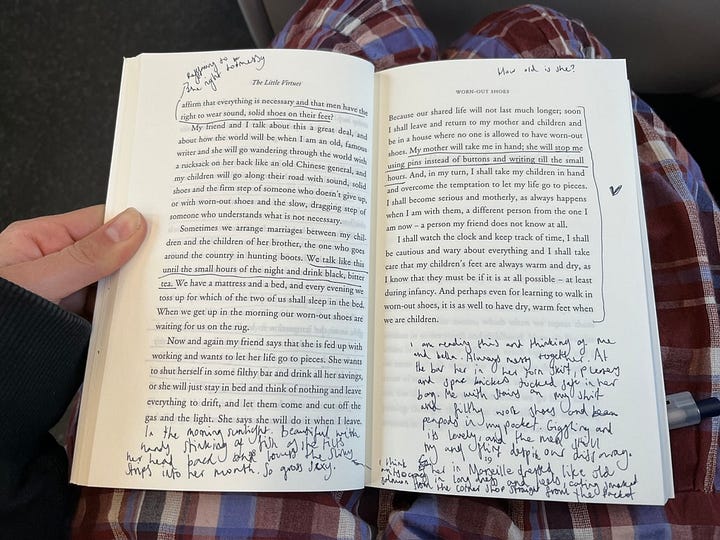
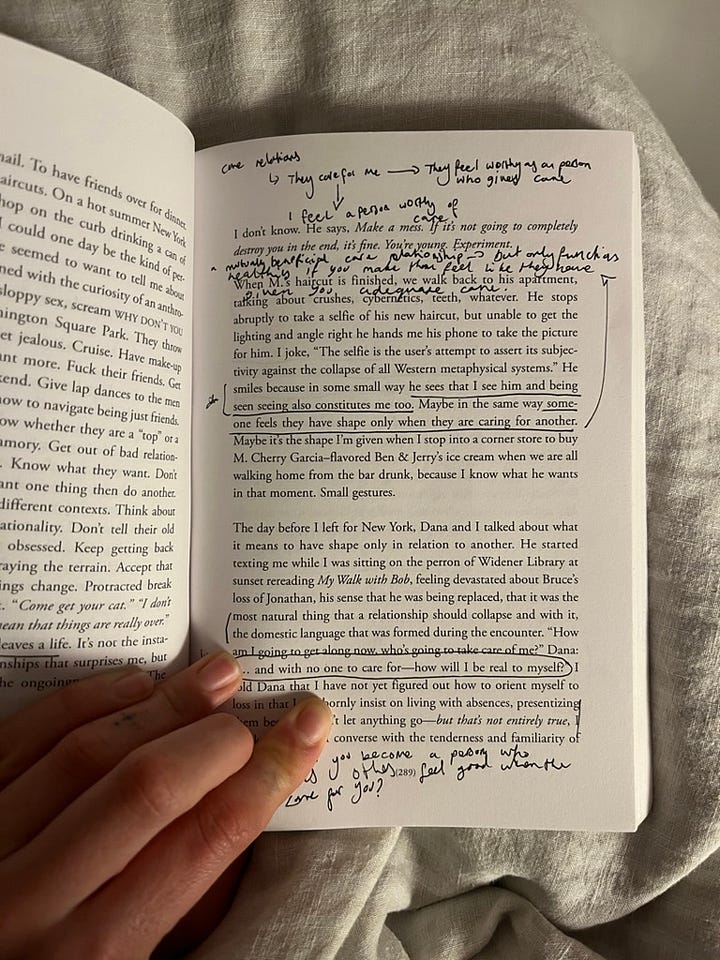
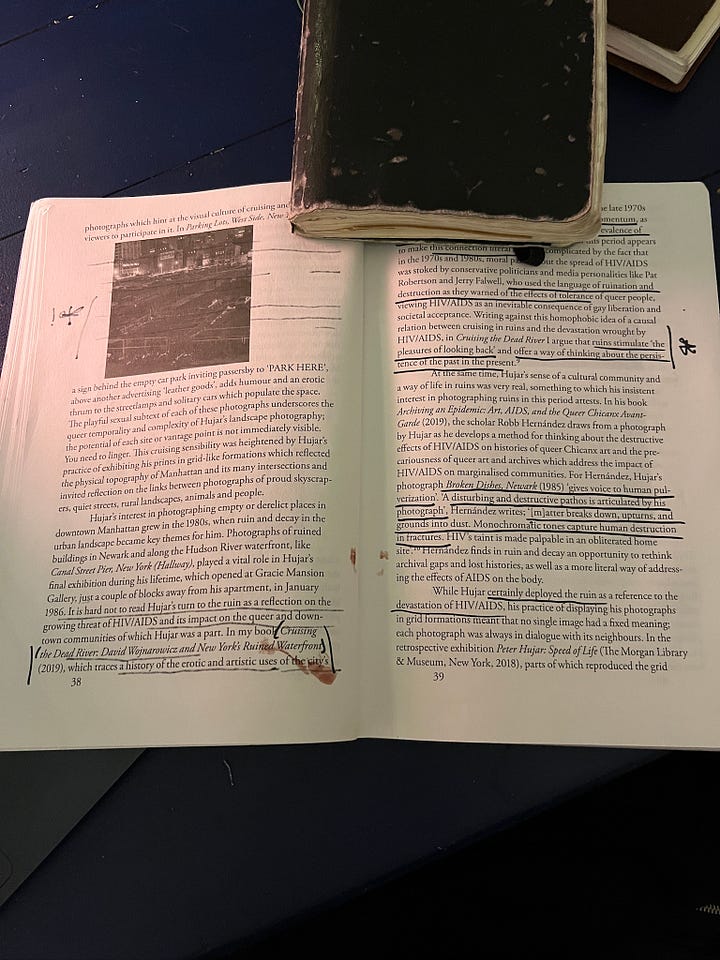
Makes me think of toilet graffiti, the communally created text-art that decorates bathrooms, forming an unofficial cartography of the city. I discover it’s called latrinalia—the toilet as nexus point, where different lives intersect via multi-coloured inks scrawled across walls, tangling into conversations that stretch across temporalities. Separate moments in time, connected by piss in the same toilet and hands pressed up against the same black walls. As in Sara Ahmed’s notion of orientation: in the act of writing, these marks reorient us, mapping new connections through a shared bodily act.8
Lindsey Darst writes about bathroom graffiti as an equalizing space, where people from different backgrounds come together, linked through their bodies. These marks build alternate geographies—maps of lives that have passed through this point and, for a moment, are brought into relation.9
Jean Genet begins The Prisoner of Love writing:
“The page that was blank to begin with is now crossed from top to bottom with tiny black characters — letters, words, commas, exclamation marks —and it’s because of them the page is said to be legible. But a kind of uneasiness, a feeling close to nausea, an irresolution that stays my hand — these make me wonder: do these black marks add up to reality? The white of the paper is an artifice that’s replaced the translucency of parchment and the ochre surface of clay tablets; but the ochre and the translucency and the whiteness may all possess more reality than the signs that mar them.”10
I am living in the gap. May I stay hidden in there?
Jamie Hood in the introduction to Heroines by Kate Zambreno, page 1
Jackie Wang, Alien Daughters Walk in the Sun, pages 296 and 299
Édouard Glissant, Poetics of Relation, page 11
Walter Benjamin in ‘Hashish in Marseilles’, 1932
Aldo Rossi, A scientific Autobiography, page 19
Moyra Davies, Index Cards, page 69
Wang, 278
Sara Ahmed, Queer phenomenology: Orientations, objects, others. 2006
https://mnartists.walkerart.org/the-writing-on-the-wall-bathroom-graffiti-as-a-public-art-form
Jean Genet, The Prisoner of Love, 1992, page 1




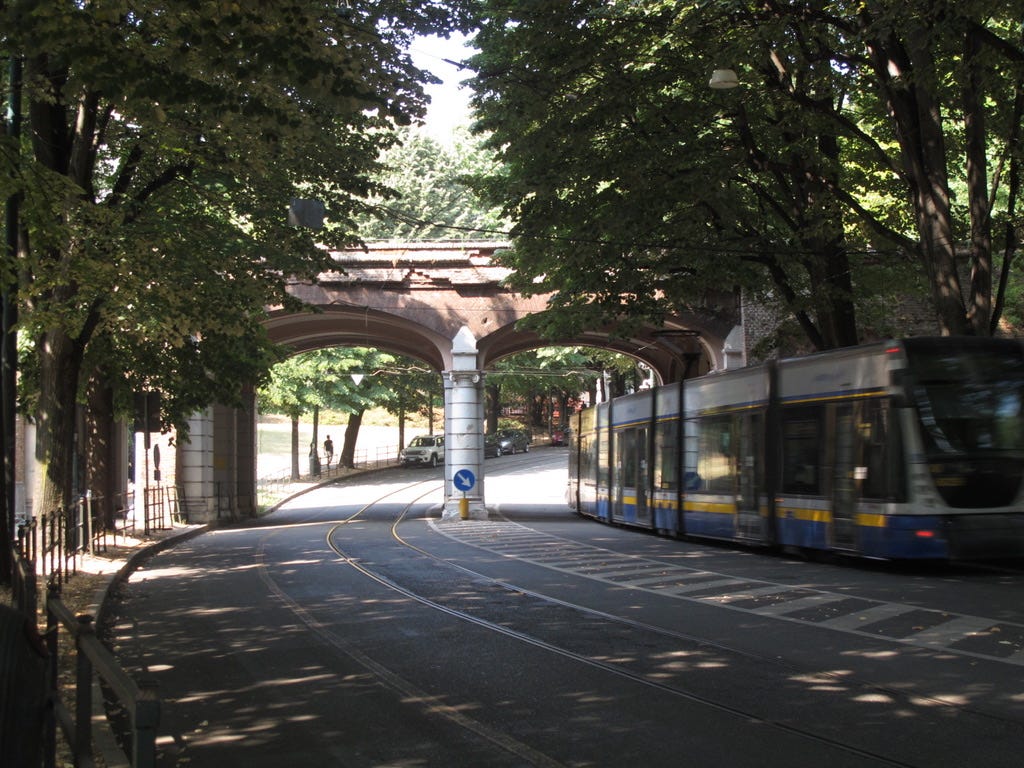



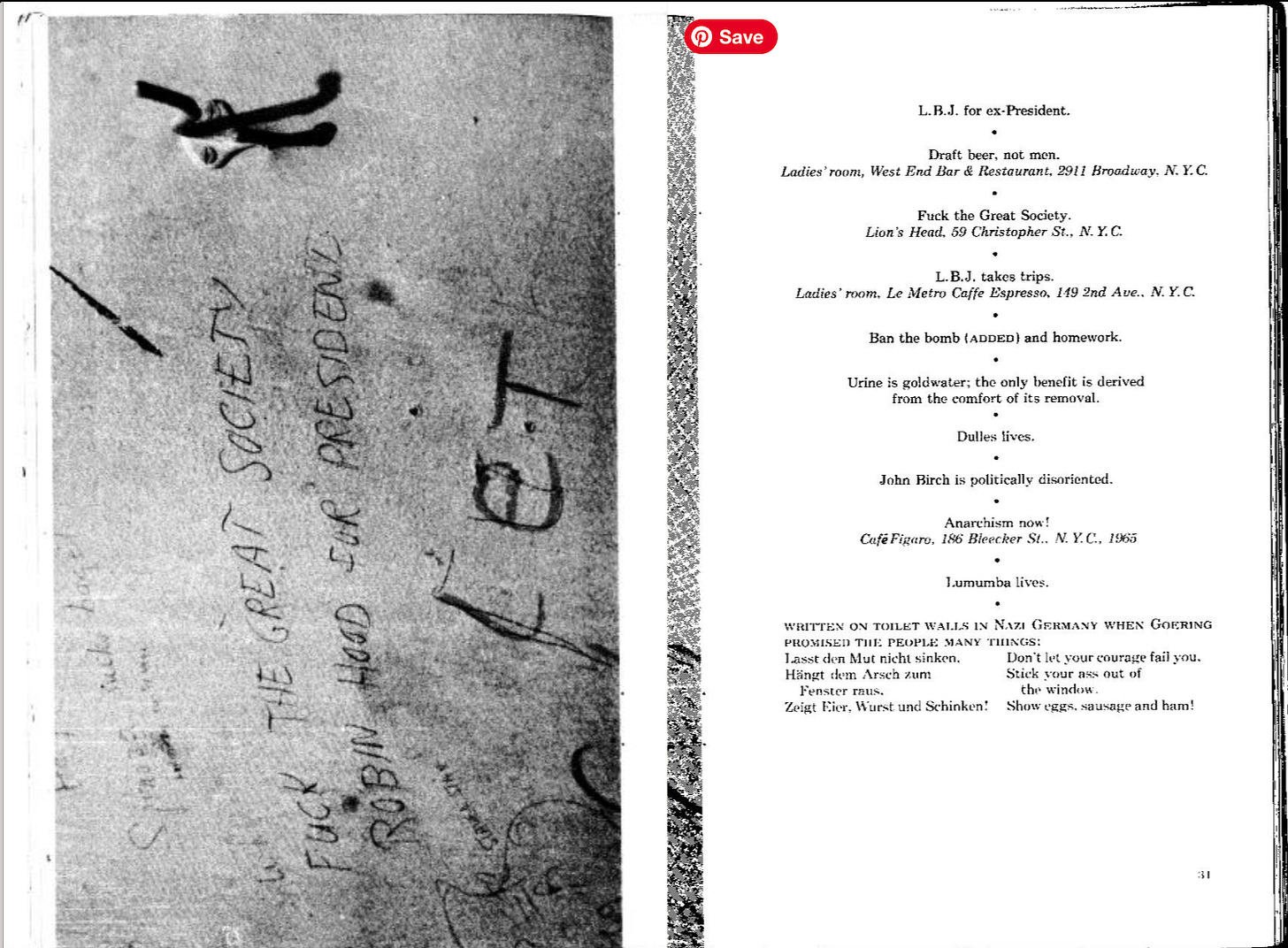
I love the description of Torino! yes it is a 'melancholy' city. My heart felt too heavy and gloomy in this city of straight lines, mountains and low clouds. and I also love the notion of rhizomic thinking - instead of straight linear lines - more chaotic and full of surprise!
so lovely!